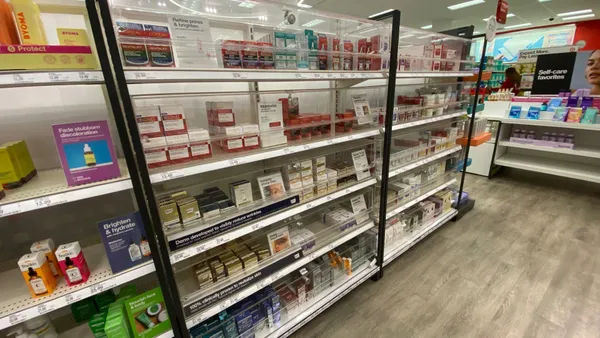Dive Brief:
- Starbucks recently tested QR codes supported by 1App on posters in four San Francisco locations to drive trial of its app with promising results, the technology company’s CEO Raheel Hasan told Mobile Marketer.
- Approximately 11,000 customers sampled the app during the three-week trial, with 27% of visitors without the Starbucks app already on their phones having accessed it by scanning one of the codes via Snapchat.
- Customers did not need to download the app and instead could quickly access it on their mobile browser. The InstantScan service from 1App recently announced support for Snapcodes, meaning anyone with Snapchat has access to a QR code reader, according to a press release. Any other app with QR capabilities can also scan InstantScan codes.
Dive Insight:
The InstantScan service from 1App attempts to provide a solution for marketers hoping to drive app downloads by accessing a cloud-based mobile operating system called OneOS, which turns apps into on-demand mobile content via apps with QR code scanners. The web apps are fully functional, and deep links can be used to drive access to specific sections like promotions, coupons and product information for a more contextual experience.
Starbucks’ app is one of the biggest mobile successes by a brand to date, with 42% of store visitors already having it installed. As Starbucks continues to invest in improving the app via features like mobile ordering and delivery, the chain — like most marketers with apps — is looking for ways to optimize its investment by driving more downloads. However, it's gotten harder to encourage consumers to install apps as the number of available ones has grown exponentially and a certain amount of app fatigue has settled in. Research from Marketing Force cited in the 1App press release shows 64% of U.S. consumers don’t know if their favorite fashion retailer has a mobile app.
For retailers, giving shoppers a way to trial their app while inside stores, ostensibly at a time when it can be of service, could drive use of the app. For example, a shopper could scan a QR code on a price tag to be taken to the item on the store’s app, buy it within the app and have it shipped without having to download the app. If retailers see that someone then bookmarks the app or accesses it repeatedly, they can engage and encourage them to take the extra step of installing it.
The news comes as QR codes are undergoing a resurgence, with Snapchat, Facebook and Spotify all recently embracing the 2D bar codes to bridge offline and online experiences via smartphones. Starbucks has long supported QR codes, making them a key part of the chain’s mobile payment and loyalty strategy as well as leveraging them in a variety of marketing promotions. The chain also continues to push the envelope on mobile, recently initiating a test of a dedicated mobile order and pay store, embracing iMessage and investing to help it better handle store traffic driven by mobile ordering.















